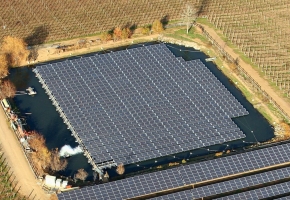Japan to try beaming solar power from space in mid-decade

A new global race is heating up to develop technology for transmitting solar power collected in space to Earth, with a Japanese public-private partnership aiming to run a trial around 2025.
Space-based solar power was proposed by an American physicist in 1968. The concept is to launch solar panels into space to generate electricity at an altitude of 36,000 kilometers.
The solar power is converted into microwaveս – the same electromagnetic radiation used in microwave ovens – and sent down to ground-based receiving stations for conversion into electrical energy.
Microwaves can pass through clouds, making for a stable supply of beamed-down power regardless of the time of day and weather.
In Japan, a group chaired by former Kyoto University President Hiroshi Matsumoto has been leading the research. In the 1980s, it was the first in the world to successfully transmit power via microwaves in space.
Research continued after Kyoto University professor Naoki Shinohara took over, and in 2009 the group used an airship to transmit power from an altitude of 30 meters to a mobile phone on the ground. It is working to refine core technology for supplying power wirelessly.
It successfully ran microwave power transmission experiments horizontally in 2015 and vertically in 2018, both over a distance of 50 meters. Vertical transmission with distances between 1 km and 5 km will be attempted in the future.
The group plans an experiment around 2025 to see if power can be transmitted from outer space to the ground. Small satellites will be used to send it to ground-based receiving stations from hundreds of kilometers away.
Source: Nikkei Asia







